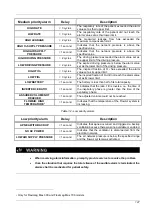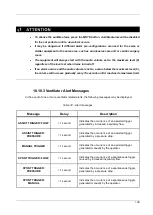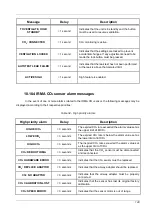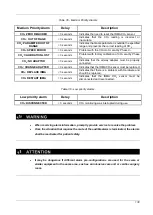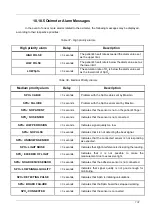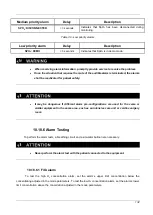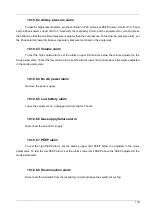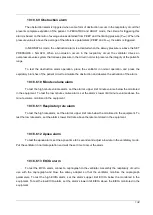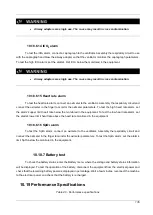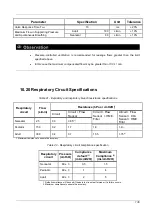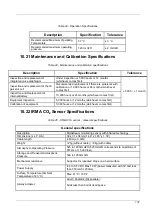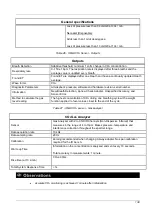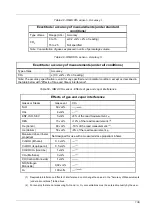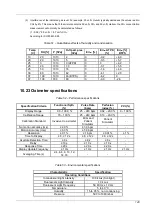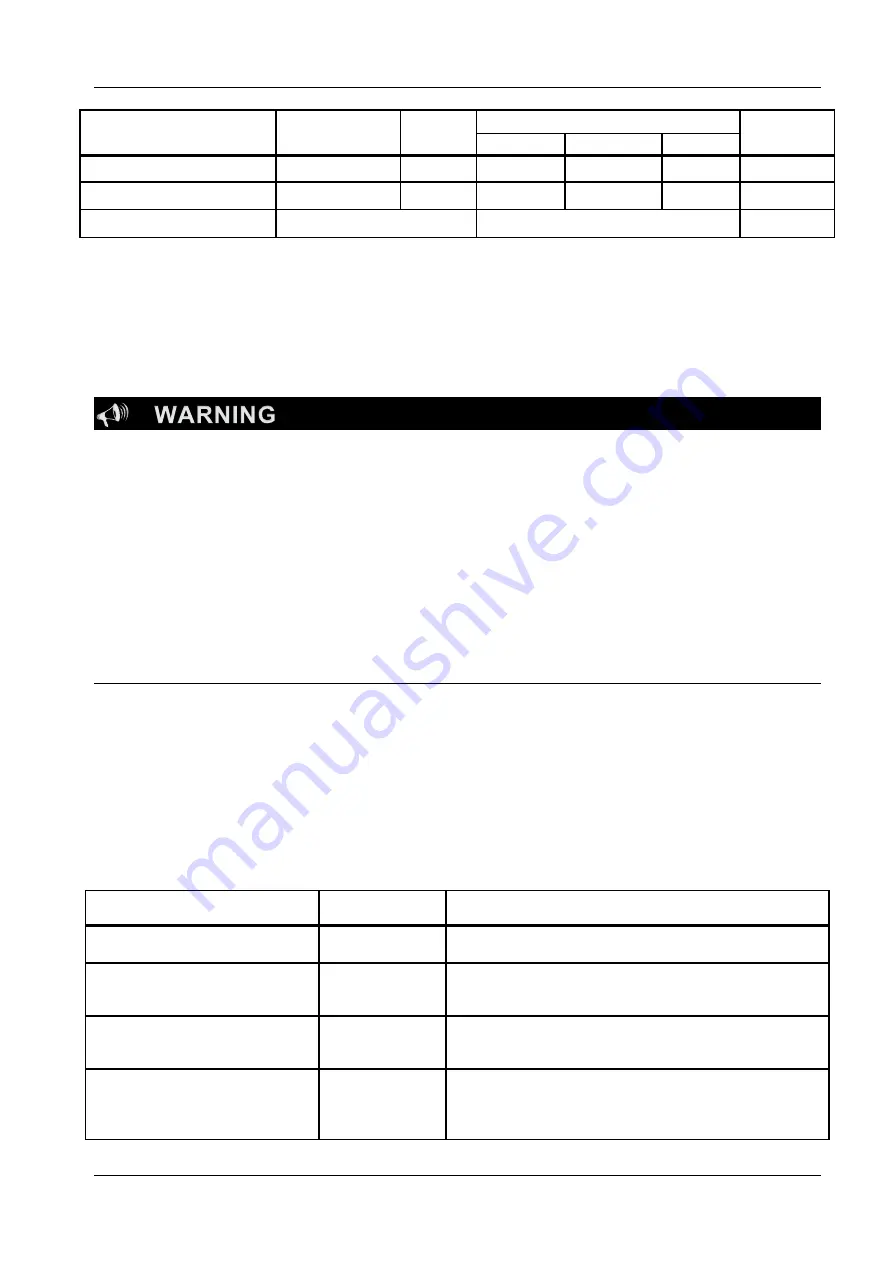
125
Alarm
Adjustment
Limit
Default Values
(1)
Unit
Neonatal
Pediatric
Adult
SpO
2
(2)
OFF, 0 to 100
Low
85
85
85
%
Apnea
OFF, 0 to 60
High
15
15
15
s
Automatic
(3)
OFF, 10, 20 and 30
OFF
%
(1) Whenever the equipment is started, or the patient type is changed, or the battery power is drained without
the ventilator being connected to the power supply, the alarms will reset to default values.
(2) Alarms available only with optional external sensors.
(3) The alarm limits will be adjusted according to the monitored values. Valid only for basic ventilation alarms
(maximum pressure, PEEP, volume, minute volume, rate and FiO
2
).
•
Alarms will return to default values whenever the device restarts or the patient changes.
•
The apnea time can be turned off and, in this condition, there will be no backup
ventilation.
•
THE OPERATOR SHALL BE AWARE OF THE RISKS OF KEEPING THE APNEIA ALARM
OFF.
•
Automatic alarm adjustment is based on the monitored values, so it can only be used
when the ventilator is NOT in the STAND BY mode and preferably when the parameters
are stable.
10.18.2 Ventilator alarm messages
In the event of one or more ventilator-related alarms, the following messages may be displayed,
depending on their respective priorities:
Table 30 - High priority alarms
High priority alarm
Delay
Description
INOPERATIVE EQUIPMENT
< 1 second
Indicates that there was a technical failure in the
equipment that needs to be replaced.
LOW BATTERY
< 1 second
When the internal battery charged is at its end.
Appropriate means of ventilatory support of the patient
should be provided.
APNEA
< 1 second
Means that the time elapsed since the last inspiration is
greater than the alarm value set as the maximum apnea
time.
LOW O
2
SUPPLY PRESSURE
< 1 second
The oxygen network pressure is below the specified
range. This alarm will not be triggered if the O
2
%
parameter is at 21% (air) and the airline is operating
within the required specifications.

















